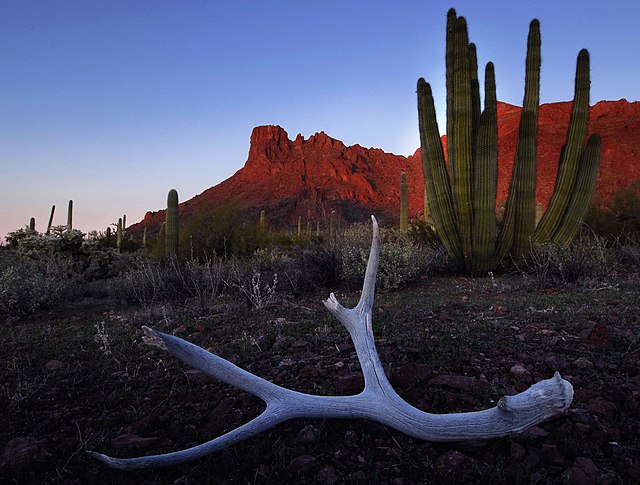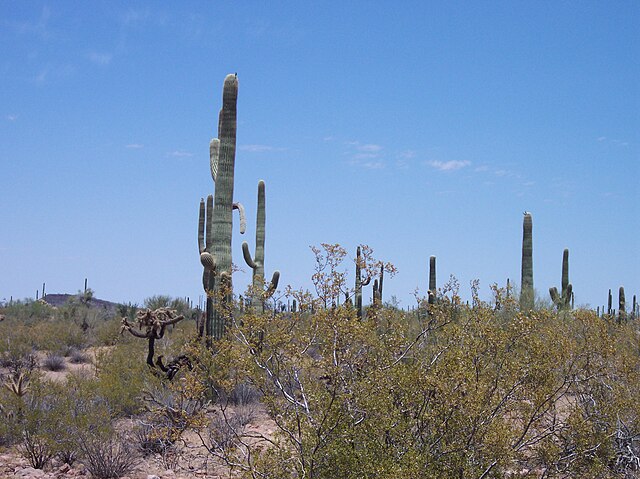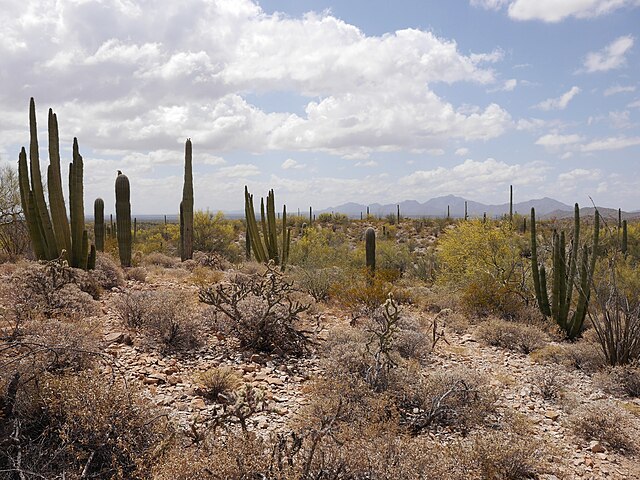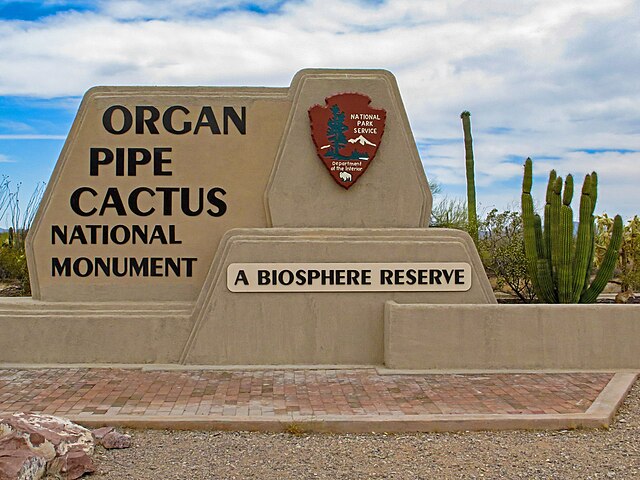Have you ever dreamed of stepping into a desert wonderland where towering cacti stand like sentinels under an endless blue sky? Welcome to Organ Pipe Cactus National Monument, a hidden gem in southern Arizona that’s calling your name. Nestled along the U.S.-Mexico border, this UNESCO Biosphere Reserve is a vibrant showcase of the Sonoran Desert’s beauty. From its namesake organ pipe cacti to rugged mountains and starlit camping nights, this park offers a unique adventure for nature lovers, hikers, and road trippers alike. Ready to explore a place where the desert comes alive? Let’s dive into what makes this national monument a must-visit destination in 2025.
Why Visit Organ Pipe Cactus National Monument?
Picture this: a sprawling desert landscape where cacti stretch toward the heavens, and the silence is broken only by the call of a cactus wren. Organ Pipe Cactus National Monument isn’t just another park—it’s the only place in the U.S. where you can see the organ pipe cactus growing wild. Spanning over 330,000 acres, this monument is a haven for biodiversity, with 31 species of cacti, rare wildlife, and a rich cultural history. Whether you’re chasing epic hikes, scenic drives, or a quiet escape from the hustle and bustle, this park delivers. Plus, its remote location means fewer crowds, giving you a chance to connect with nature on a deeper level. Why settle for ordinary when you can experience extraordinary?
A UNESCO Biosphere Reserve
In 1976, UNESCO recognized Organ Pipe Cactus National Monument as an International Biosphere Reserve, and for good reason. This park is a living laboratory of Sonoran Desert ecology, home to plants and animals found nowhere else in the U.S. The organ pipe cactus, with its cluster of tall, fluted arms, is the star of the show, but you’ll also find saguaros, chollas, and rare species like the senita cactus. The monument’s designation highlights its global significance for research, conservation, and education. Visiting here isn’t just a trip—it’s a chance to witness a unique ecosystem that’s been thriving for millennia.
A Cultural and Historical Treasure
The desert isn’t just about plants and animals—it’s a tapestry of human stories. For thousands of years, the Tohono O’odham and Hia-Ced O’odham peoples have called this region home, leaving behind a legacy of sacred sites and traditions. Quitobaquito Springs, a rare desert oasis, is a stop on the annual salt pilgrimage for the Tohono O’odham. The park also holds remnants of mining history, with ruins like those at Victoria Mine whispering tales of the 19th-century gold rush. Walking these lands feels like stepping through layers of time, where every rock and cactus has a story to tell.
Top Things to Do in Organ Pipe Cactus National Monument

Ready to hit the ground running? Organ Pipe offers a smorgasbord of activities to suit every kind of traveler. Whether you’re a thrill-seeking hiker, a leisurely driver, or a camper chasing starry nights, there’s something here for you. Let’s break down the top ways to soak in the magic of this desert paradise.
Scenic Drives for Every Explorer
If you’re not up for a hike, no worries—Organ Pipe’s scenic drives are a highlight in themselves. The 21-mile Ajo Mountain Drive is a must-do, winding through cactus-studded basins and offering jaw-dropping views of the rugged Ajo Range. Grab a free interpretive guide at the Kris Eggle Visitor Center to learn about the plants and geology along the way. Another gem is Puerto Blanco Drive, which takes you past abandoned mines and the tranquil Quitobaquito Springs. These graded roads are perfect for soaking in the scenery without breaking a sweat. Just make sure your vehicle can handle some gravelly patches!
Pro Tip for Scenic Drives
Bring a high-clearance vehicle for the bumpier sections of Puerto Blanco Drive, and don’t forget plenty of water—cell service is spotty, and the desert sun doesn’t mess around. Plan your drive for early morning or late afternoon to catch the golden light painting the cacti.
Hiking Trails to Write Home About
For those who love to explore on foot, Organ Pipe’s trails are a dream come true. The park boasts nine scenic trails, ranging from easy strolls to challenging treks. The 2.2-mile Victoria Mine Trail takes you to historic mining ruins, while the 3-mile Red Tanks-Senita Basin Trail offers a glimpse of rare senita cacti and a desert oasis. For a bucket-list hike, try the Estes Canyon and Bull Pasture Trail, which climbs to panoramic views of the monument’s rugged terrain. Each trail is a chance to get up close with the desert’s quirky plants and elusive wildlife. Can you imagine standing atop a ridge, surrounded by cacti, with Mexico in the distance?
Safety Tips for Hikers
The desert can be unforgiving, so come prepared. Wear sturdy shoes to dodge those sneaky cholla spines, pack at least a gallon of water per person, and avoid hiking in the summer heat. Always let someone know your plans, as trails can be remote, and help might be hours away.
Camping Under the Stars
Want to fall asleep to the sound of coyotes howling under a sky bursting with stars? Organ Pipe offers camping options for every vibe, from developed sites at Twin Peaks Campground to primitive backcountry spots. The campground has modern amenities like restrooms and showers, making it a great base for exploring. For the adventurous, backcountry camping lets you immerse yourself in the wilderness—just grab a permit and prepare for solitude. Nothing beats waking up to a desert sunrise, trust me.
Flora and Fauna: The Desert’s Living Heart
The Son thinks of a barren wasteland, think again. Organ Pipe is a green desert, teeming with life. Its 31 cactus species are just the beginning—over 650 plant species thrive here, from spiky chollas to delicate wildflowers that bloom after winter rains. The wildlife is equally impressive, with desert bighorn sheep, Sonoran pronghorns, and the rare Quitobaquito pupfish calling the park home. Birdwatchers, get your binoculars ready for northern cardinals, Gila woodpeckers, and hummingbirds galore. It’s like nature threw a party and invited everyone.
The Iconic Organ Pipe Cactus
Let’s talk about the star of the show: the organ pipe cactus. Unlike its cousin, the saguaro, which grows a single trunk before sprouting arms, the organ pipe sends up multiple fluted columns from the ground, reaching up to 20 feet tall. These night-blooming beauties attract bats and other pollinators, and their fruit has been a food source for Indigenous peoples for centuries. Spotting a cluster of these cacti at sunset is like watching a desert symphony in slow motion.
Rare and Endangered Species
Organ Pipe is a sanctuary for creatures you won’t find anywhere else in the U.S. The Quitobaquito pupfish, a tiny fish surviving in a desert spring, is a testament to nature’s resilience. The Sonoran pronghorn, one of the fastest land animals, darts through the landscape, while the lesser long-nosed bat flits about, pollinating cacti under the cover of night. Protecting these species is part of the park’s mission, and your visit helps support that effort.
Planning Your Visit to Organ Pipe

Ready to pack your bags? Here’s the lowdown on making your trip to Organ Pipe Cactus National Monument smooth and unforgettable. From getting there to staying safe, I’ve got you covered.
Getting to the Monument
Organ Pipe is remote, but that’s part of its charm. Located about 106 miles southwest of Phoenix and 40 miles south of Ajo, the park is accessible via State Route 85. The closest major cities are Tucson (185 miles) and Yuma (140 miles). If you’re feeling adventurous, you can cross into Mexico at Lukeville, just south of the park, to visit its sister park, El Pinacate y Gran Desierto de Altar. Renting an SUV is a smart move for the gravel roads, and don’t expect reliable cell service—download maps ahead of time.
Best Time to Visit
The Sonoran Desert is a land of extremes, so timing is everything. September to May is prime visiting season, with mild temperatures and occasional wildflower blooms. Winter (December to February) is ideal for hiking, with daytime temps in the 60s and 70s. Summer brings scorching heat, often exceeding 100°F, so unless you’re a heat-loving lizard, stick to the cooler months. Monsoon season (July to September) can bring dramatic thunderstorms, turning dry washes into torrents, so check weather forecasts.
Packing Essentials
Pack like you’re heading into the wild west. Bring sunscreen, a wide-brimmed hat, and sturdy hiking boots. Water is your best friend—carry at least a gallon per person for hikes. Snacks, a first-aid kit, and a map are must-haves, as amenities are limited. If you’re camping, pack warm layers for chilly desert nights. And don’t forget your camera—those cactus silhouettes at sunset are Instagram gold.
The Border Wall Controversy

No discussion of Organ Pipe is complete without touching on its unique position along the U.S.-Mexico border. In 2019, construction of a 30-foot border wall began, sparking debate over its impact on the park’s ecosystem and cultural sites. The wall has disrupted wildlife migration, including the endangered Sonoran pronghorn, and raised concerns about archaeological sites representing 16,000 years of human history. The Tohono O’odham Nation has opposed the construction, citing damage to sacred sites like Quitobaquito Springs. While the park remains open and safe, the wall’s presence is a reminder of the complex balance between conservation and politics.
Is It Safe to Visit?
Safety concerns have popped up in the past due to the park’s border location. In 2002, ranger Kris Eggle was tragically killed, leading to a partial closure of the park until 2014. Today, increased border security, including surveillance towers and patrols, has made the park safe for visitors. You might see signs warning of smuggling, but sticking to marked trails and following ranger advice keeps risks low. The real dangers? Dehydration and rattlesnakes. Stay hydrated, watch your step, and you’ll be fine.
Connecting with the Desert’s Soul
There’s something magical about Organ Pipe Cactus National Monument that stays with you long after you leave. Maybe it’s the way the organ pipes stand tall against the sunset, or the quiet that wraps around you like a warm blanket. Maybe it’s the knowledge that you’re walking in the footsteps of ancient peoples, surrounded by plants and animals that have thrived against all odds. Whatever it is, this park invites you to slow down, look closely, and listen. It’s a place where the desert’s heart beats loud and clear, and all you have to do is show up.
Conclusion
Organ Pipe Cactus National Monument is more than a destination—it’s an experience that awakens your senses and stirs your soul. From its iconic cacti to its rugged trails and starlit nights, this Sonoran Desert gem offers adventure, beauty, and a chance to connect with nature in a way few places can. Whether you’re driving the Ajo Mountain loop, hiking to a historic mine, or simply soaking in the silence, Organ Pipe will leave you with memories that last a lifetime. So, what are you waiting for? Pack your water bottle, lace up your boots, and head to this desert wonderland in 2025. The cacti are calling, and they’ve got stories to tell.
Frequently Asked Questions
1. What is the best time of year to visit Organ Pipe Cactus National Monument?
The best time to visit is September to May, with winter (December to February) offering mild temperatures ideal for hiking and exploring. Summer can be extremely hot, often exceeding 100°F.
2. Are there entrance fees for Organ Pipe Cactus National Monument?
Yes, the entrance fee is $25 per vehicle, $20 per motorcycle, or $15 per individual (valid for 7 days). An annual pass costs $45, and federal lands passes are accepted.
3. Is it safe to hike in Organ Pipe due to its border location?
Yes, the park is safe for visitors, thanks to increased border security since 2014. Stick to marked trails, stay hydrated, and follow ranger guidelines to avoid risks like dehydration or wildlife encounters.
4. What are the must-see attractions in the monument?
Don’t miss the Ajo Mountain Drive, Victoria Mine Trail, Quitobaquito Springs, and the Red Tanks-Senita Basin Trail. Each offers a unique glimpse into the park’s beauty and history.
5. Can I camp in Organ Pipe Cactus National Monument?
Absolutely! Twin Peaks Campground offers developed sites with amenities, while backcountry camping is available with a permit for a more rugged experience.

